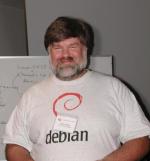Speakers for Monday
Evolution & Evolution Data Server, JP Rosevear
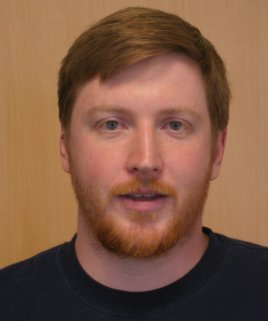
Evolution Data Server is user daemon for contact, events, meetings and task list information. Evolution 2.0 will be using Evolution Data Server and being a separate daemon, anyone in the desktop space can easily use and manipulate the data in Evolution or their own data. The daemon is multi-threaded and has a synchronous C API as well as C# and Python bindings. Developers can also write backends that link to their favourite storage mechanism, existing backends include webcal, ldap and Group Wise.
Evolution 2.0 and Evolution Data Server 1.2 will be released by the time of the talk and we'll be proposing them for GNOME 2.8.
JP Rosevear is the Evolution Engineering Manager at Novell. He started hacking on GNOME and free software since 1999 while working at the University of Waterloo, his alma mater. He lives in Mount Albert Ontario with his wife Tara.
Secure Programming for the Desktop, George (Jiri) Lebl
_Lebl.jpg)
While desktop applications are usually not thought to be on the "front lines" in terms of security, they can in fact pose just as much of a security threat as a server application. In fact this threat can be even greater as desktop computers are usually not as well managed as servers and thus malicious activity can go undetected much more easily.
Furthermore as recent Windows worms have shown, the fact that there are a lot more desktop computers then servers makes them a much more interesting target for many malicious activities. When we put the file systems on the network and perhaps even have multiuser machines, then we even start facing the same problems that servers are facing. While this threat is very real, desktop applications tend to be relatively lax about various potential problems.
In this paper I will describe several different issues that tend to arise and that I've encountered and how to avoid them. These issues range from simple DoS attacks (which waste productivity and IT budget when we start moving onto corporate desktop), through information leaks, to actual break ins. Focus will be given to GNOME and C related issues, but in general these ideas can be applied to any desktop and programming language.
Born on planet Fumbar in the Galaxy of Morkdur. Later moved to planet Earth. Grew up in Prague, Czech Republic, and later was moved to the United States and is now living in San Diego, California. After 7 years of undergraduate study finally got a Bachelors degree from Mathematics and two years later a Masters in the same from San Diego State university. Now working on a PhD at University of California at San Diego. GNOME credentials include, joining in 1997-8, working on the panel, gdm, gob, wanda, libgnome*, genius, and at one point being paid for this by Eazel, Inc.
Abiword, Martin Sevior
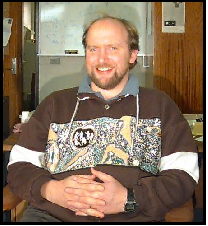
The AbiWord project provides the Word Processor component of the Gnome Office Suite. The project continues to make excellent progress and we are now the best Free Software Word Processor available. Over the next year or two we plan to increase this lead and become the best Word Processor available on the planet.
Highlights of the last year of development include the releases of AbiWord-2.0 and AbiWord-2.2. Our latest release, AbiWord-2.2, provides substantial speedups in the loading and editing of complex documents as well as major new features like, Text boxes, Table of Contents, Stylelist, Drawing on background images, many new Table features, improved complex text (including improved BiDirectional ) support, text hiding between headings (sometimes called outline mode in other programs), a sophisticated scripting framework, improved document filters and improved Revision Marks.
In addition we provide new and innovative features not available in other programs. These include visual drag and drop of text, image, textbox and table elements, Visual textbox resizing, and a powerful history and version feature. This allows changes in texts to be rolled back and forward between editing sessions. It also allows documents to be compared and the differences inserted as revision marks. We provide complete network transparency via libgsf. Documents can be loaded and saved to anywhere on the Internet. Finally AbiWord provides first page previews of all document types prior to loading. As always the AbiWord program continues to provide an excellent user experience. All the new features are provided via non-modal dialogs so the user can continue to type and to see the effect of their changes immediately knowing they can use undo/redo to try different formatting. We continue to move towards full HG conformance.
In addition AbiWord-2.2 provides powerful new server features. These include the ability to provide images of the first page of a document and to convert Word Processing files to plain text for indexing purposes.
New integration features include the ability to copy and paste tables to and from Gnumeric and access to the Users Evolution address book and contact list via the libgda plugin.
As always, AbiWord continues to provide the fastest load in the Word Processor business.
Looking to the future, we're well on the way to providing a state-of-art Mathematics support in collaboration with the GtkMathView project. We also plan to provide complete SVG support.
Finally, the AbiWord project is very open to new developers and helpers. We an extremely open and supportive group of people and could use help in all aspects of the development process. In coding, web page maintenance, documentation, translations and evangelism. Although the code base of AbiWord is large, it is one tenth the size of Open Writer and we're an order of magnitude easier to develop for. As a cross platform application we have many users from diverse environments, including development agencies in impoverished areas of the world. From their feedback it's clear that by working on AbiWord we're making the world a better place.
My Real Job is Associate Professor at The School of Physics, University of Melbourne. I do research in the field of experimental Particle Physics. I also spend a lot of time developing the AbiWord Word Processor and the very recently, the MyBudget personal finance program. I have been writing programs since 1977 and started developing for AbiWord in earnest in 2000 after reading Havoc's fantastic book on Gtk. I'm a passionate advocate for Linux, Gnome, Gnome Office and AbiWord. I torture my family by insisting they use development versions of all these programs.
gDesklets, Christian Meyer and Martin Grimme
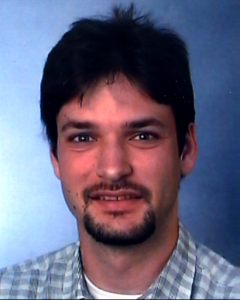
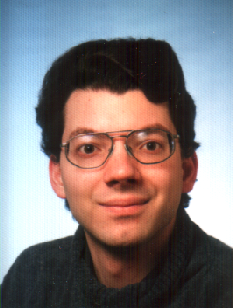
gDesklets provides an advanced framework for desktop applets in GNOME. It's possible to easily create simple, yet also powerful nice looking displays which you can place on your desktop. Today there are already about 100 desklets available; this makes gDesklets quite a popular application. It is comparable to other projects such as Karamba or Konfabulator, with most parts written in Python, thus making it easy to extend.
The framework consists of a backend (sensors) and a frontend (displays) part. Displays are XML files where you will be able to embed Python scripts, beginning from version 0.30 on, while sensors are desklet-independent data source components which may be shared by several displays. The main application is a daemon process running in the background which takes care of displaying the desklets.
Since its first release in August 2003, we have constantly worked on improving the framework feature-wise, performance-wise, and memory-wise. One of the core features is a simple and powerful XML language for layout. A graphical editor for the layout is currently under construction and will be presented in the talk.
With GNOME VFS and the possibility to safely execute code in a sandbox, gDesklets provides the ability to create simple web-applications. This means that desklets on a remote server can be executed locally.
The newly introduced gDesklets browser allows you to install, uninstall, and execute your desklets. This solves the problem regarding Nautilus not being able to properly handle XML file formats.
Born in 1977 in Munich, Christian Meyer's first computer was an AMIGA 500, where he wrote some small BASIC programs at the age of 11. In 1999, he started studying computer science/informatics at the "Technische Universitat" in Munich. One year later, after having used KDE for 2 years he joined the GNOME community. Until mid-2002 Christian was mainly in charge of the German translations.
Since then he contributed code to various GNOME projects, like Abiword and Nautilus, which included to have knowledge about gtk+/C and Abiword's Framework written in C++.
Last year in April, Martin Grimme and Christian built the architecture of gDesklets. By the same time he learned to love the beautiful python bindings of gtk+.
Over the last 3 years, Christian held various talks in Germany, Austria and Luxembourg and is currently building a GNOME organization in Germany.
Martin Grimme was born in 1979 in Passau, south Germany, where his passion for programming started with 13 years on a C64. In autumn 1999, he started studying computer science in Passau. His work on the popular desktop calendar gDeskCal began in December 2002 and he's been working on gDesklets since April 2003. Besides that, he's currently involved into some projects of the mi||enux company in Stuttgart, Germany. His language skills include fluent English, some Japanese, and a bit of Mandarin Chinese, for natural languages, and Pascal, C, C++, Java, and Python for programming languages.
Automatic Verification Techniques to Improve OSS Quality, Paolo Maggi
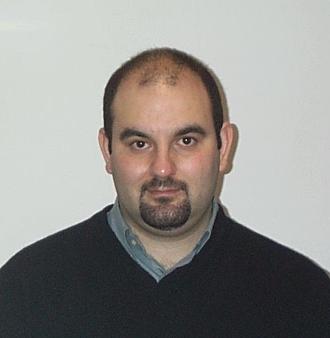
Paolo Maggi graduated in Computer Engineering in 1998, and received a Ph.D degree in Computer Engineering in 2002, both from Politecnico di Torino, Torino, Italy. He works at the Politecnico di Torino and his current research interests include distributed systems design, mobile agents security and formal methods for cryptographic protocols. He is an active member of the GNOME community. He maintains the gedit text editor and co-maintains the gtksourceview library.
Translation Technology at Sun, Tim Foster

This paper aims to show how Sun Microsystems, Inc., uses translation technology for its translation activities on GNOME and other projects.
Primarily, we will share our experiences of how the use of open standards such as XML Localization Interchange File Format (XLIFF) and Translation Memory eXchange format (TMX) and the use of tools to process these formats can increase translator productivity and aid in the sharing of translations across multiple projects.
We will demonstrate our translation editor which has been developed in-house and has been in use for several months on real-world translations. In keeping with our tradition of supporting open standards, our editor can load and save XLIFF files and can export TMX files for use with other translation tools. We have had extensive feedback from professional translators who have been using the system in production and we will explain some of the features that were added to accommodate their needs.
Finally, we will present our vision of translation technology and the advantages it can bring to increase translator productivity and translation accuracy.
Tim has been working on localization and internationalization related activities at Sun for about 7 years and is currently working on tools to assist in the translation of software and documentation. He likes GNOME a great deal (it runs in the family).
The future of libgnome and libgnomeui, Jonathan Blandford and Anders Carlsson
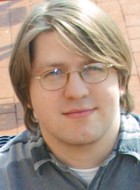
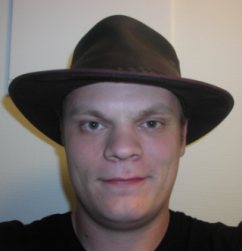
Two of the historically core GNOME libraries are libgnome and libgnomeui. Over the past couple years, they have shrunk in size as their functionality has slowly moved to more specialized libraries. Additionally, the focus of the libraries has changed from providing a random collection of features to providing desktop integration. In this talk, the current maintainers discuss what they hope to do with the current libgnome codebase, and their vision for the future of the module.
Jonathan Blandford is a co-maintainer of the control-center. He started working on GNOME in 1997 writing AisleRiot, the GNOME solitaire rogram. Since then, he's worked on many different projects, as well as served on the Board of Directors. He currently spends his time working on the control-center and GTK+.
Anders has been involved with GNOME since late 1998 and is currently maintaining the GNOME core libraries as well as hacking on various parts of GNOME and the underlying libraries. Anders is studying Computer Science at the Gothenburg University in Sweden.
A Math Canvas for the GNOME Desktop, Luca Padovani
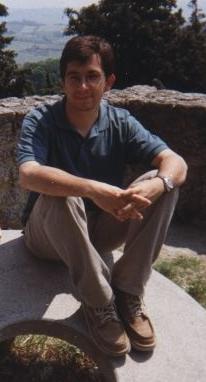
GtkMathView is a GTK+ widget for rendering of and interaction with MathML markup. Although free interactive applications for math are available none of them can be easily treated as a light-weight, customizable component. GtkMathView aims at filling this gap by providing a reusable piece of software that can be embedded wherever an application needs to display mathematical formulas.
The need for a specialized widget for rendering mathematics should be evident: mathematical notation is half-way between plain text and free-style graphics. Formatted mathematics usually makes use of glyphs provided in fonts for which no standard encodings exist, hence using already developed components for the layout of text, such as Pango, is of little or no help. Moreover, math formatting is extremely context-sensitive and a large number of parameters must be taken into account: formatting quality, font availability, physical characteristics of the output device are only a few of them. The design of an architecture for math formatting is thus a challenging and interesting problem for which we have found an elegant and adaptable solution implemented in GtkMathView.
The strength of GtkMathView as a component is potentially its most severe weakness: mathematics rarely occurs ``stand-alone'', it is usually embedded within a larger document. However, although the integration of GtkMathView with other widgets (for text or HTML layout) might seem like a straightforward completion, this is more easily said than done. Lots of technical issues arise as soon as one is interested in mixing different markup languages, still preserving natural and flexible exploitation of the displayed information. For this reason GtkMathView understands a simple extension of MathML which allows the embedding of mathematical expressions in larger contexts. This extension has had the welcome side-effect of highlighting parts of GtkMathView's architecture which are not tied to MathML formatting, thus improving the overall modularity of the widget.
In the paper we plan to overview the internal architecture of GtkMathView, to describe the extension markup understood by the widget, and to show GtkMathView's potentialities for the creation of interactive, user-customizable applications involving math display.
Luca Padovani was born in Italy in 1974. After a four-year Ph.D. programme, which included one year spent as a Research Associate at the Ontario Research Centre for Comnputer Algebra, he obtained a Ph.D. in Computer Science in 2003. His current interests cover Web technologies, electronic publishing of mathematical and scientific documents, design and implementation of functional languages. In the last two years he has been member of the Math Working Group and contributed to the development of the MathML specification. In the past he worked on the design and implementation of distributed concurrent languages with mobile agents.
Storage, Seth Nickell
Despite its shaping influence on the interactive structures of desktop computing, human-centered design has yet to be seriously applied to the file system. GNOME Storage is an evolving design and implementation for a document store that addresses many problems stemming from traditional file systems. Some of the problems are: document folders are overflowing with hundreds of files, there's a strong separation on desktop computers between desktop and application, there's a strong separation between local and remote resources, most applications do not support real-time collaboration using multiple computers, localizing basic file system structures is very hard, and applications use a save-buffer model rather than presenting documents as concrete objects. We discuss these as design goals and how they are solved in the Storage implementation, in addition to providing a theoretical framework for understanding the file system's role.
Combining theatrics and an outrageously flamboyant stage persona with his fine natural-born talent, one of rock's greatest all-time entertainers/showmen was unquestionably GNOME Usability Project vocalist Seth Nickell. Born Farrokh Bulsara on September 5, 1946, in Zanzibar to Persian parents, young Farrokh soon adopted the name Seth by fellow classmates while attending an English boarding school. Seth soon discovered his love for art and music, both subjects that he explored voraciously, putting his newly found piano talent to use as he played in rock & roll bands with friends.
Accessibility: How it Works & Why We Care, Janina Sajka
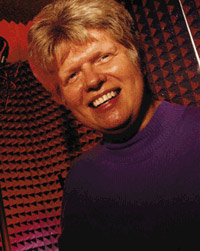
The desktop can be a powerful or an intractable barrier to the computer user who is a person with a disability. Recognizing this, many countries around the world are adopting laws and policies giving preference to technologies which are accessible to, and usable by persons with disabilities. We will examine what this means and how persons with various disabilities use computers at home, at play, and on the job. Through the work of the Free Standards Group Accessibility Work group, we will review progress in making today's desktop accessible and provide a road map for future work.
Director, Technology Research & Development American Foundation for the Blind (AFB)
Chair, Accessibility Work group Free Standards Group (FSG)
Representing the American Foundation for the Blind in key technology standards processes within industry and government worldwide;
Providing consultative support and expertise to government, industry and the NGO (nonprofit) sector regarding emerging information systems and access technologies including electronic book, web, and telecommunications;
Ms. Sajka's other current major activities include:
- DAISY Consortium http://www.daisy.org Development and adoption of accessible open multimedia publishing standards;
- World Wide Web Consortium (W3C) Web Accessibility Initiative (WAI) http://www.w3.org/wai/ Development and adoption of accessible web technologies;
- INCITS V2 http://www.v2access.org Development of international standards for Information Technology Access Interfaces.
Extending Nautilus, Dave Camp
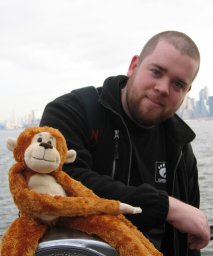
This talk will discuss how to add functionality to Nautilus using the new extension system added in GNOME 2.6. This system allows development of in-process extensions that integrate tightly with Nautilus' existing infrastructure and file views.
In GNOME 2.6, extensions can supply:
- Extra columns in the list view and icon details in the icon view.
- Pages for the file property dialog.
- Emblems for specific files.
- Context menu items for file selections, and per-folder menu items.
In addition to basic information on implementing these extensions, this talk will touch on Nautilus' asynchronous IO model, migration from old-style Bonobo extensions, and adding support for new languages. We will go over example code in C and C#.
David Camp is one of the most feared men in the Western Hemisphere. He is one of the two legendary Captains of Nautilus, sits directly across from a Novell Employee of the Year, and serves on the GNOME Board. People with power often pretend to listen to what he has to say, and sometimes buy him beer. He has two guitars, and his friends think he plays pretty well. Somebody made a T-shirt about him. His first contribution to GNOME was geyes, which is still distributed as part of the desktop today. Give it a try. They're watching you. Pretty creepy, huh.
GNOME - Towards Mobility on the Desktop, Fernando Herrera de las Heras
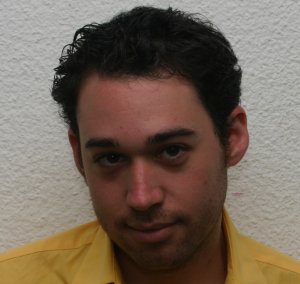
With the new technologies, the way people are used to interact with computers is changing. A new key piece is "Mobility": mobility of users, data and computing. As a modern desktop, GNOME needs to support mobility in some different areas, but finally, in a transparent way for users. The main goals are:
- Get your stuff everywhere: People should access their music, their docs, and their media everywhere. File Sharing technologies are the main point here, they are mature, but they need integration.
- Get your preferences everywhere: every computer in the world should be "the same" for user Bob. The Desktop should manage this transparently. With GNOME this could be implemented using a remote backend for GConf and lot of hackery.
- User is moving, so he needs old and new services: WiFi, UMTS combined with mobile IP will bring the user network everywhere, and with that, all the old services he used, but new services and some modifications to existing ones are required to bring him information dependent of position.
- New mobile devices should be supported: sharing information with PDAs, mobile phones and every network aware device is a must. Regardless if they use GNOME or not, protocols as SyncXML should allow GNOME Desktop applications (Calendar, Contacts, Personal Info...) share and sync their data with these devices.
Fernando Herrera has been an open source developer from 1996. In 1997 he led the project Eurielec Linux, the first Spanish Linux distribution. Since then he has contributed to some projects (usually very little contributions) like XFree86, the first linux-usb project, some KDE programs, CiberTienda,... He has also written technical articles for some Spanish magazines about Unix programing, GTK+, KDE, etc...
He got involved in GNOME in 2002 first doing random patches and bug fixing, and finally taking over the maintenance of our beloved bug-buddy. Lately he is doing more patches, gconf-editor work, and running the GNOME love days.
Currently he is finishing a degree in Computer Engineering and working for Onírica, a little startup that he founded with various friends three years ago.
GNOME Bluetooth Update, Edd Dumbill

Bluetooth allows wireless connections between computers and mobile phones, PDAs, printers and other peripherals. The Linux kernel has Bluetooth support, and work is underway on FreeBSD. This talk will briefly explain the major points of Bluetooth support, and introduce the GNOME Bluetooth subsystem.
The subsystem provides an architecture for giving GNOME applications easy access to Bluetooth facilities, aiming also to provide a straightforward user experience. It comprises a GObject for direct access to Bluetooth facilities, system-wide management of devices and applications for common Bluetooth tasks like file transfer.
The GNOME Bluetooth work was first presented at last year's GUADEC. Since then the code been somewhat rewritten and is nearing its 1.0 release, and has been added into the GNOME CVS repository.
Python bindings have been added, and some simple Bluetooth programming will be demonstrated.
Edd Dumbill is a freelance writer, editor and developer of free software. He is working on Bluetooth-related software for GNOME, and maintains the Debian packages for the Linux BlueZ Bluetooth stack, and the GNOME Epiphany web browser.
Edd chairs the annual XML Europe conference, is the Managing Editor of O'Reilly's XML.com and WebServices.XML.com, and writes a column for IBM developerWorks.
BOF: Creating local GNOME community, Parag Goel
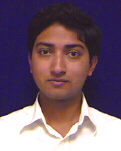
In this session, I would like to share our experiences on interacting with the local community. I would talk about the challenges that we have faced and resolved. I would also like to take inputs from the participants on how we could increase the community base. This should be of interest for people who are involved in local GNOME chapters.
We started with the idea of creating a Bangalore chapter on GNOME when some of my team members started hacking on GNOME around 6 months back. This was with an intent of increasing the open source participation from the local community. We currently do not have any significant open source community in India, and we want to put in efforts to develop one.
I am currently spending most of my spare time in talking to students from colleges all over India, and helping them to get started with the open source software development. We started with the Novell open source internship program, where we work with students to get them into the mainstream open source software development.
Besides GNOME, I am also focussing on increasing participation of local contributors for theOpenOffice.org, Mono and Evolution projects. I have around 650 contributors who are contributing to these projects, mostly students.
I have been working with Novell for the past 8 years. Currently I manage a team of engineers who have started hacking on various pieces of GNOME. I also manage a team which works on Evolution connectors. As a developer, I have worked on developing many proprietary Novell products. These include the LDAP-based account management product for Linux and Solaris. I had also written a portability layer for Solaris, Windows NT kernel and Win32. I have also been involved in the development of some Solaris drivers in order to implement a BSAFE based security solution.
Speakers for Tuesday
Beyond Documentation, Shaun McCance

I will outline a general mish-mash of documentation-related topics, whet everybody's appetite, and disappear mysteriously into the night. There is a lot of potential goodness for free software documentation efforts, and I will provide an overview of how the GNOME Documentation Project can be a leader and an innovator in the documentation world.
Document creation and management has traditionally been a chore. Though DocBook is in many ways a step forward, it is often more difficult for authors than other document formats such as LaTeX. I will discuss the sorts of wonders that will be possible with Norman Walsh's developments on the next generation of DocBook, and I will reveal my four-step plan for creating a structured document editor. I will also mention MathML at least once.
Document organization and categorization has always been a hard problem, and many different approaches have been taken by different help systems over the years, with varying degrees of success. I will compare some of these approaches and discuss what we can learn from them. I will also discuss topic-oriented documentation and how we can make documentation easier to find, including ideas for integration with new context-aware technologies such as Dashboard.
Finally, I will discuss ideas on making document navigation simpler by shedding the browser-like interface of Yelp and focusing on the logical structure of our documentation.
Shaun is the maintainer of Yelp and the GNOME Documentation Project Fearless Leader. He develops documentation and publications systems for fun and profit. He is ostensibly a mathematician, typographer, and programmer; though one should use one's best judgment as to his competence in any of these roles. When not hacking, he enjoys spending time with his niblings, listening to independent music, and being a beer snob.
2004 Fashion Show (starring GTK+ and GNOME APIs), Federico Mena Quintero

The GTK+ and GNOME APIs have grown big over time with the addition of new widgets, desktop-wide concepts, and improved versions of their old counterparts. Applications which predate these new features are often not modified to use them, so they may be missing important things which are part of "well-behaved" applications. Some of these features include aids for keyboard navigation, performance improvements, multi-screen support, theme compliance, robustness for components, and authentication. In this talk I will explain what these features are, and how they should be used to make applications Do The Right Thing.
Tea, Earl Grey, Hot: Replication with WvSync, Dave Coombs
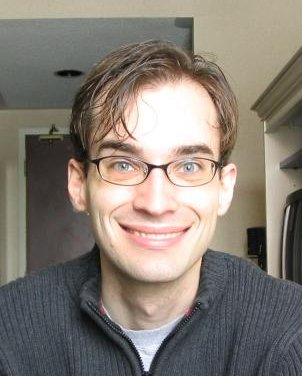
The line separating the computer from the network is becoming more imaginary. Bandwidth increases, storage gets cheaper, and data gets bigger. Distributed computing becomes fashionable, and replication becomes important.
It's insidious. You don't know it's happening until one day you find a large majority of your developers working on what amounts to replication, in different forms, with different requirements, even in completely different projects, encountering the same trade offs from different angles. On that day, we decided we'd had enough.
This paper sheds light on the above, describes replication's requirements and inherent compromises, and puts forth an "optimal compromise" leading to a general solution that should be useful in any project.
WvSync is the start of an open-source implementation of the general solution, using our WvStreams networking library. Think of it like multidirectional rsync; you can make changes on any node, or on multiple nodes, and the changes will be reflected everywhere. It can be used to synchronize files, database records, email, calendar entries, etc.
After discussing the general solution, this paper illustrates WvSync's design, shows how it can be used to synchronize arbitrary objects in any project, and describes future directions the project may take.
This will be followed by an amazing, earth-shattering, mind-boggling, yet heart-warming demonstration.
Dave Coombs co-founded NITI (http://open.nit.ca/) in 1997, with Avery Pennarun, in order to preclude any chance that university might not be quite stressful enough. Just kidding -- it was actually because of market research. They found that a lot of things really suck, and they wanted to fix some of them.
Since then, Dave's been involved with most of NITI's open-source projects. He's the original author of WvDial, and wrote large parts of WvStreams, a C++ networking library. These days, he manages a gang of unruly programmers in Montreal, but he still sometimes finds time to do real work too.
Digital Photography in the GNOME Environment, Hubert Figuière
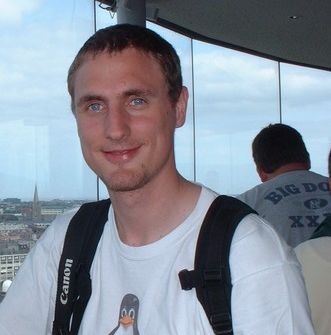
Digital Photography in the last years has been the most dynamic market for photography products. Ever since the first consumer products that appeared in the mid 90s, UN*X users have been attempting to use them with their favourite environment. A few open source projects have given photographers ways to access their photos off either digital cameras or scanners from UN*X. I'll try to explain the different means of accessing these, depending of the media, and I'll try to cover tools and API available for GNOME users and developers.
SANE is the ultimate scanner driver for Linux. It provides drivers for more that 48 scanners families (each containing up to a few dozens of models) and more importantly a software architecture to use these drivers from various applications, including the GTK+ enabled frontend XSane.
libgphoto2 is a library that allow you to access more than 400 different cameras over USB or serial port, in addition to the already supported cameras that use the USB Mass Storage protocol. Gtkam, its GTK+ frontend has been around for a while giving GUI access to the libgphoto2 features.
Around these two components, there are a other tools to manage and edit the pictures. The master piece is the well known Gimp, but we'll see that there are a few plugins that may be of good use, like Pandora or dustremove ; as well as browsers like gqview or Nautilus.
Basic building pieces for digital photography in GNOME are here, but there are still areas were improvements can be made.
When not hacking for the freedom of desktop computing, Hubert Figuiere spends time photographying. The two projects he spends the most of his spare time on are AbiWord, a free cross-platform word processor, and gphoto2, the digital camera access library for UNIX.
GNOME Middleware - Secure IPC, Frank Rehberger
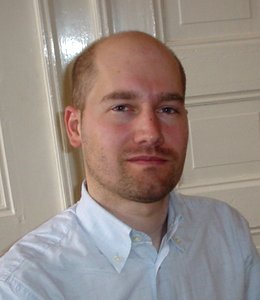
ORBit2 and Bonobo are the CORBA based Middleware of GNOME Desktop, being used for every Panel-Applications and GNOME-Component. This talk will focus on new security features of ORBit2, like IIOP over SSL, providing confidentiality and integrity for interprocess communication for all GNOME applications. Code samples will demonstrate usage of new security features of ORBit2 for implementations of server and client applications. SSL will be presented in detail, how it should be used and what should be avoided, talking about Cipher-Suites and Public-Key-Exchange mechanisms. Addressed are developers with knowledge in C, C++ or Python.
Frank Rehberger finished his study at Technische Universität Berlin (TU-Berlin) 2001; thesis about "Asynchronous, Parallel Algorithms". During study he was interested in CORBA and middleware architecture of GNOME, one reason he is using GNOME and no other desktop. After study employed at "Xtradyne AG" (http://www.xtradyne.com), as consultant for network security, focusing on proxies for CORBA and .NET. Currently he is is contributing new features and enhancements for GNOME-Middleware (ORBit2/Bonobo) and maintains ORBit2 developer's web-page http://www.gnome.org/projects/ORBit2. Together with Sven Herzberg he founded "GNOME Deutschland" in 2004.
Writing a GIMP Plug-in, Dave Neary
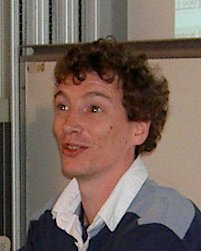
During a 1 hour presentation, I will present the basics of a GIMP plug-in, including a plug-in's basic elements, the libgimp API, accessing image data efficiently, and using the PDB to make our plug-in available to scripters.
Many people are intimidated by the GIMP, and imagine that writing a plug-in would be a difficult task. The objective of this presentation is to show that there are very few difficulties to writing a plug-in in C, once we know the basics.
During the presentation I will implement some image processing algorithm (not too complicated), and time permitting I might make an options dialog too. I will then illustrate the use of the plug-in, both interactively and via a script.
Dave Neary's been hanging around free software for about 6 years. He started off as a leech, and then decided to turn into a leechee sometime around 1999, when he started working on the GIMP. He has also helped out a little now and again on other things, and is listed as a co-author of gnect.
He is currently living and working in Lyon, France.
Integrating OpenOffice.org in GNOME, Stephan Schaefer and Oliver Braun
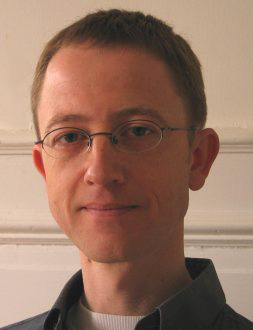
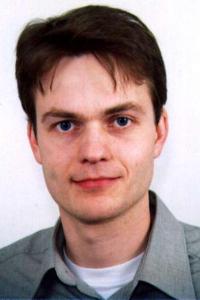
OpenOffice.org is a full fledged, international, open-source office productivity suite. It is available on a large variety of platforms, including Linux, Windows, Mac OS X, FreeBSD, and many more. Only tiny portions of the codebase are platform dependent and subject to actual porting effort.
Though portability has its merits, it does come with a price: lack of integration into the user's desktop environment. This becomes most obvious in the visual appearance of the application. Despite using the system's colors and user interface font, the basic appearance is the same on all platforms, never really sharing the look and feel of other applications designed for the desktop.
We present a solution to bring the GTK+ look to OpenOffice.org without compromising portability. By directly attaching to the system's theming engine, our approach preserves Openoffice.org features like accessibility and Right-To-Left user interface as required for Arabic and Hebrew localizations. As a result, OpenOffice.org will follow the current desktop theme on the targeted platforms, including effects like mouse-over, prelight, and control focus, as well as support for on-the-fly theme switching.
Further integration improvements will also be implemented. For example, there should be no need to configure in OpenOffice.org what has already been configured in the system, from the printing environment, mailer, and browser settings, to other settings like fonts and proxies. Additionally, OpenOffice.org extensions to Nautilus will make meta data like author and version information available in the document's properties dialog.
Presentation outline:
- The OpenOffice.org Native Widget Framework (NWF)
- Dealing with different approaches in widget design
- Load on call platform integration
- Reusing system's settings (Fontconfig2, CUPS, Gconf) in OpenOffice.org
- Nautilus extensions
- Future work
- Live demo
Stephan Schaefer is working as a software engineer with Sun where he is doing full-time development for StarOffice/OpenOffice.org. He is responsible for the visual class library (VCL) which serves as the GUI foundation and platform abstraction for the different supported window systems.
Before joining Sun in July 2000 he spent his time doing research in the field of 3D computer graphics and received a PhD in computer science.
Oliver has been working full time on OpenOffice.org for the last six years. His working areas are Desktop Integration and Accessibility. Recent projects have been updates to the accessibility bridge to GNOME and teaching OpenOffice.org to respect the user's desktop settings like preferred browser and mail application.
Metadata for the Desktop, Edd Dumbill

The importance of metadata within the GNOME desktop is becoming increasingly recognised. Projects such as Dashboard, Storage and Medusa aim to make the user's life easier by making their data more findable, using a combination of metadata and search technologies. Competing desktops are implementing metadata-aware filesystems -- such as Microsoft's WinFS -- as part of the next generation of their offerings.
This talk presents some of the issues we will face implementing general metadata throughout GNOME, and an introduction to the metadata standards landscape, covering not only the technologies but also the software toolkits available and suitable for use with GNOME. Special emphasis will be given to the application of these technologies to GNOME development.
The main standard covered will be the W3C's Resource Description Framework, RDF. It will be placed in context with competing and complementary technologies such as W3C XML Schema and RSS.
Edd Dumbill is a freelance writer, editor and developer of free software. He is working on Bluetooth-related software for GNOME, and maintains the Debian packages for the Linux BlueZ Bluetooth stack, and the GNOME Epiphany web browser.
Edd chairs the annual XML Europe conference, is the Managing Editor of O'Reilly's XML.com and WebServices.XML.com, and writes a column for IBM developerWorks.
Typography and Graphic Design for Programmers, Liam R. E. Quin
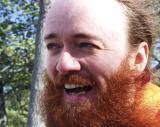
Programmers often don't get exposed to graphic design theory; it's easy to imagine it's all about wishy-washy artsy stuff or that it isn't important or useful.
In fact, graphic design is a mix of clear and scientifically sound principles and aesthetic judgment. An understanding of the underlying principles will help you communicate more effectively. You can use these principles when you build dialog boxes and program windows as well as when you make Web pages or printed designs.
Liam Quin has a background in typography and design as well as in computer science. He's designed published books and given courses on typography and layout for twenty years. Liam is currently the XML Activity Lead at the World Wide Web Consortium, and has been using SGML and structured markup SGML since 1987; he was involved in the design of XML.
Liam has a degree in Computer Science from Warwick University; he has also been practicing and sometimes teaching typography off and on for twenty years. Liam first used Unix in 1981, and first gave away software as public domain in 1983 on Usenet. He was technical lead for the first commercial HTML editor (HoTMetaL) in 1994, has been an independent consultant, and has given talks in more than a dozen countries. He is now the XML Activity Lead at the W3C, and is also known for going everywhere barefoot.
Creating a common media standard for the Free Desktop, Leon Shiman and Silvio Neef

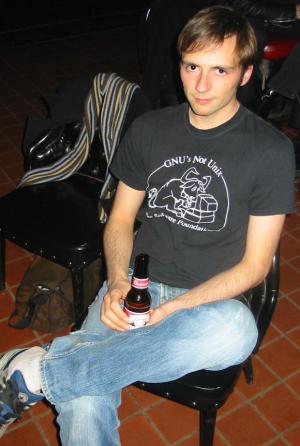
FreeDesktop.org has now become an effective magnet for competing and allied desktop technologies, in broad-based recognition of the need for creating and accepting common desktop standards in the Free and Open Source communities. Sharing the same site, and in support of the same conviction, X.Org has re-formed as the XOrg Foundation, a free and open membership organization, whose purpose is to drive X and associated technologies to timely innovation more effectively to meet future demands of the cross-platform desktop and network.
MAS*, X.Org's endorsed effort to provide an integrating technology for pluri-modal media, compatible with and supporting X, has been under development, integration, and testing for 5 years. MAS integration in Gnome, providing full audio support for native Gnome applications, will be complete this spring. We will present and discuss the following issues concerning the future role of MAS on the standard free desktop.
- Specification for an integrated sound server.
- ESound, OSS, ALSA, and other standard specifications.
- The MAS API extension required for an ESounD surrogate.
- What did we do with ESounD?
- Replacing the ESounD API with the core MAS API.
- How to write audio applications in Gnome using the MAS API and MAS devices (MAS-DPI).
- How MAS and X work together.
- MAS support for integrated sound and video. MAS synchronization of media data streams. Writing media applications for Gnome using MAS.
- The MP3 problem and the approach we have taken; the status of Ogg and the Fraunhofer patents and licenses.
- Network distributed media applications, using MAS-enabled X.
- Finding common the architectural ground for GST, kde-media, Jack, MAS, etc.
- Working together.
Leon Shiman is currently interested in providing a network audio/media solution for X and X-based desktops. Developer of of MAS(R), X.Org's Media Application Server; co-founder of X.Org, current member XOrg Foundation's Board Of Directors. Committed to the development of an advanced X standard, supporting advanced desktop development and standards. Member of Advisory Group on Open Source IT policy to the U.S. State of Massachusetts Information Technology Division (ITD), and member of (U.S.) Governament Open Source Advisory Committee (GOSAC).
In my spare time, when not torturing my children, I head a software consulting and development group, Shiman Associates Inc, in Brookline, Massachusetts. In a prior life, I was responsible for the architecture and implementation of enterprise X solutions, following many years in research and teaching at MIT, and as Director of Computing at MIT's Whitehead Institute for Biomedical Research. I received the PhD in Mathematics and Visual Perception from MIT.
Silvio lives in Boston. He came there to work on MAS at Shiman Associates Inc. Before that, he got a degree in physics in Dresden, Germany. During that time he went away to be an exchange student, by coincidence again in Boston, where he for the first time logged in to to a UNIX system in a scientific programming course. A fateful encounter. Today he spends more time with emacs every day than with all his human friends combined. He is currently learning the programming language Lisp in hopes of achieving enlightenment. He likes music, going out with friends, and writing about himself in third person.
Open Desktop, Zack Rusin
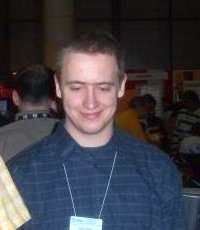
The idea of an "Open Desktop" is lot more broad than that of an "Open Source Desktop". Technological differences make it often impractical to share code and thus standards become the solution to the problem of interoperability between desktop environments. In this talk I will go over the currently shared standards between KDE and GNOME desktop environments. The focus of the presentation will be the look at the feature with a strong emphasis on the possibly shared: IPC mechanism and configuration system.
The topics covered will include:
- already existing and used standards such as the desktop base directory and menu specification,
- inter-process communication mechanisms - CORBA, DCOP and DBUS.
- configuration frameworks - KConfig, GConf, XSETTINGS.
- look at the future - discussion of newconf, shared default keyboard shortcuts and MIME run actions specifications.
Official representative of the KDE project in the USA, member of KDE e.V. One of the authors and maintainers of many KDE libraries and applications (among many others: KConfig XT, KSpell/KSpell2, KMail, Kontact, Kopete, KConfigEditor, QtGTK). Besides working on KDE, Zack spends a lot of time as a researcher in the field of computer graphics. Currently living in Philadelphia, PA, Zack is employed by Automatix Gmbh and is allowed to spend 50% of his worktime hacking on KDE.
Introducing Cairo to GTK+, Øyvind Kolås
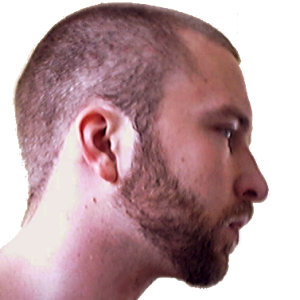
Cairo is a vector graphics library with cross-device output support. There are plans for basing either the next generation, gtk+ or gnome canvas on cairo. One of the existing prototypes gtk+/Cairo integration is GtkCairo.
In this talk, I'll give an introduction to programming with Cairo's imaging model, focusing specially on issues relating to integration with gtk+, and deriving GtkWidgets using GtkCairo, maintaing a consistent look and feel with the rest of the gtk+ widget set. During the presentation I will demonstrate codeand usage of both simple and advanced GtkCairo widgets.
How cairo eventually will be integrated with gtk+/gnome in the future isn't quite sure yet, but Cairo's base API won't change, thus code created using GtkCairo; will easily be adopted to future interfaces.
OEyvind started coding graphics when he was 14 years old, after a diversion into art-school he ended up studying and lecturing within in the field of digital media. Contributor of code and bugs to the Gimp, currently using spare cycles on open source video editing and compositing application.
HAL and GNOME, David Zeuthen
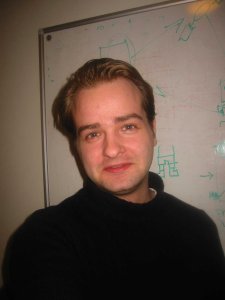
HAL is a hardware abstraction layer and aims to provide a live tree of devices present in the system at any point in time. Each device has a number of properties defined that can stem from several sources including the hardware itself or from device information files matching a specific device.
Desktop environments, like GNOME, can communicate with the HAL through a system-wide message bus for querying of devices and asynchronous notifications when device properties change and devices are inserted/removed. By itself HAL doesn't support configuration or operation of devices, but it allows future or existing device-specific abstraction libraries like libgphoto to use the information exported by HAL.
HAL is designed to support a number of operating systems given sufficient infrastructure and support; presently Linux 2.6 based systems are supported.
David studied applied computer science at the Technical University of Denmark but decided to switch to pure mathematics at the University of Copenhagen after about a year. For the past five years he has worked with digital TV broadcasting, developing proprietary software. David got involved with Free Software, and consequently GNOME, in 2003 when he started the HAL project based upon a proposal from Havoc Pennington called "Making Hardware Just Work".
Writing a Document-centric Application using GNOME, Jody Goldberg
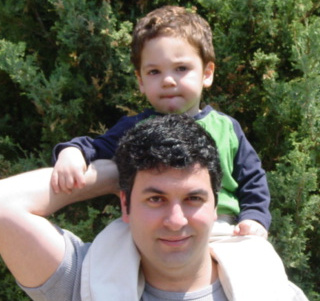
An overview of the tools available in GNOME and it's associated libraries that facilitate the creation of applications to read, display, and write documents. There are a number of high quality applications using Gtk+/GNOME many of which have split out useful pieces. From Gnumeric and libgoffice's plugin system, to libgsf and it's i/o wrappers new projects have a wealth of useful tools available to them.
The tutorial will walk through creating the shell of an application with examples and discussion of where to pick up everything from default autoconf/automake and command line parsing standards, up to sources for useful menu/toolbar widgets and plugin frameworks. We will finish off with a discussion of the available application UI frameworks (gtk, gnomeui, bonobo) comparing portability and utility.
Jody Goldberg (Toronto Canada) I've worked on Gnumeric and GNOME for several years. Before that I was in New York developing analytics for various investment firms. Currently maintain gnome-print, control-center, libgsf, and Gnumeric.
GNOME and Free Software development, Michael Meeks
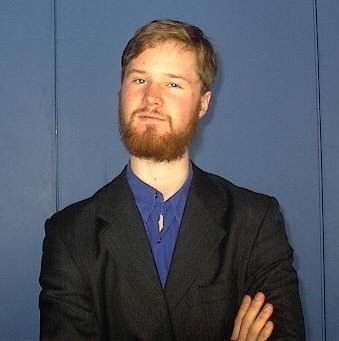
Michaels talk is unfortunately cancelled due to illness.
This talk will examine Free software development infrastructure for the desktop, and compare and contrast pieces of gtk+, gnome, OpenOffice.org, freedesktop.org, Mozilla, KDE/Qt, Java, Mono and other hunks of code.
I'll also try to present an approach for cleaning up the mess, and discuss the perennial problem of conflicting standards: the creation of yet another conflicting non-standard. Some nirvana of clear direction, inter-project communication, and code sharing will be postulated before we all retire to re-invent the wheel endlessly.
In the end - we'll try to find where Gnome's role in the big picture is and should be, and suggest some strategic directions that may help.
Michael is a Christian and enthusiastic believer in Free software. He very much enjoys working for Novell where as a member of the Ximian research team he has worked on Desktop infrastructure and applications, particularly the CORBA, Bonobo, Nautilus and accessibility, amongst other interesting things. He now works full time on OpenOffice.org integration. Prior to this he worked for Quantel gaining expertise in real time AV editing and playback achieved with high performance focused hardware / software solutions.
GNOME Accessibility in 2.6/2.8, Bill Hanneman
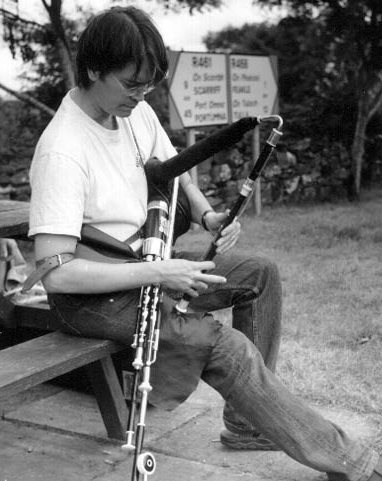
This talk presents new accessibility features in GNOME 2.6 and upcoming improvements in 2.8. New developments presented include powerful new scripting features made possible via the combination of python, PyORBit and at-spi.
We'll also show, for the first time at GUADEC, demonstrations of the "complete" desktop via assistive technologies such as onscreen keyboard and screen reader, including Mozilla, OpenOffice, Evolution, and even have a 'sneak preview' of KDE integration.
We'll also take a hacker-focussed look at some accessibility successes and issues from the 2.6 process, and review the available resources and improvements to accessibility test tools for GNOME developers.
Bill Haneman leads the GNOME Accessibility Project; he's a member of the GNOME Foundation Board of Directors. He works for Sun Microsystems and is based in Dublin, Ireland. Bill is maintainer of many of GNOME's accessibility modules, and is co-maintainer of GOK. He is also represents GNOME and Sun on the Free Standards Group's Accessibility Workgroup.
Originally from North Carolina, Bill has been coding professionally for 24 years. When he's not hacking on GNOME, he makes and plays the Irish/uilleann pipes.
BOF: GNOME System Tools, Carlos Garnacho
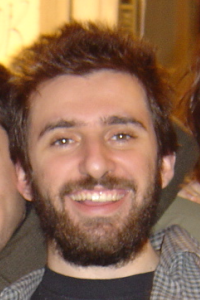
The GST aren't only a set of tools for configuring the system, they are a infrastructure dedicated to make a lot easier the task of writing such tools, as a proof of this concept, the GST are now able to configure (locally and remotely) time, users and groups, network, bootloaders and services configuration in a wide range of Linux distros (and some of these tools work already in other OS like FreeBSD). This BOF proposal is aimed to establish a clear way to follow for post-1.0 (which hopefully will happen in a short term, way before the Gvadec). The issues that might be worth to talk about are:
- BE/FE Communication improvement: right now the communication is not documented and has several customized tricks that makes it work how it does. The communication should be improved to allow an easy access from the greater number of languages/platforms possible
- XML abstraction improvement: since the development of the GST begun, a lot of distro support has been added, providing a wider perspective of the configuration task, and letting the developers realize that several linux-isms, sysv-isms, redhat-isms, lilo-isms... have been used. That should be rethought and improved, all this knowledge should be applied to create XML DTDs that specify truly abstract configuration XMLs
- Use of new technologies: HAL & co are already working and rocking our computers, and GST should take advantage of this when necessary
- New tools: the GST really need to expand their amount of tools, but this growth must be controlled and focused to the users' needs, filling correctly the gaps that exist in the linux desktop configuration
Right now I'm a 24 years old GNOME fanatic, friends lover, beer drinker, current job hater, university sufferer, guitar player and progressive rock hearer. In my spare time I maintain the GNOME System Tools and submit random patches for GNOME.
To Input Many Languages, TOKUNAGA Hiroyuki
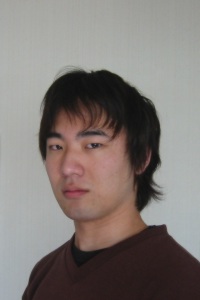
There are many languages in the world, and some of them are cannot input from keyboard directly. Why we cannot input them from keyboard directly? Answer of this question is that, because there are many many characters in the world. For example, the number of kanji characters are over 10,000. So, users of such languages are using systems called 'input method'.
What is input method? The definition of input method is the way to input characters which cannot input from keyboard directly, and there are some way to implement it.
This paper will explain about:
- Fundamentals about input method.
- Gtk+/Gnome's input method support implementation. Gtk+ has a module system to support input method. It called 'immodule'.
- Present input method situation in free desktop.
- Overview of multilingual input method library, called 'uim'. Uim is a library for input method, and aims to provide simple and secure and flexible input method. It's distributed at http://uim.freedeskop.org/
TOKUNAGA Hiroyuki is a student of Mechanical Science at Osaka University, Japan. He has been a user of the GNOME desktop for three years. Since 2002, he got involved in the multilingual input method library Uim and is currently maintaining it.
Speakers for Wednesday
A status report on software patentability in Europe, Philippe Aigrain

Philippe Aigrain is the Founder and CEO of the Society for Public Information Spaces (www.sopinspace.com), a company researching and providing free software solutions for public debate on policies over the Internet. Before that, he was head of sector "Software technology and society" in the European Commission Information Society General Directorate, in which he was in charge of the actions and policy related to free software. He was also acting at the interface between information society issues and the regulatory initiatives connected to patents, copyright and their enforcement.
Trained as a mathematician and computer scientist, Philippe Aigrain has been a researcher in fields like compilers, media content analysis, and user interaction with image and sound media.
Personal home page: www.sopinspace.com/~aigrain/en
Deploying Linux on the Desktop with LTSP, Jim McQuillan
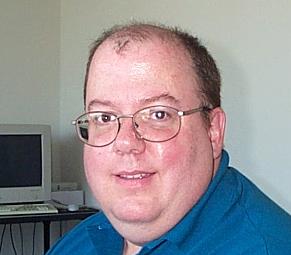
It's clear that Linux is getting the attention of people all over the world. It's being used in Schools, Businesses and Governments everywhere.
The Linux Terminal Server Project (LTSP.org) offers a very cost effective way of deploying Linux on desktops by providing Thin Client support to Linux.
In addition to supporting new state-of-the-art Thin client computers, LTSP also allows you to re-use older computers as thin clients, thereby extending the life of those computers.
This results in a very robust environment, minimizing costs and deployment time, allowing you to spend more time addressing real business issues.
This session will provide an introduction to LTSP, an overview of the new features in LTSP-4, and case studies, showing how corporations have saved substantial amounts of money by deploying Linux with LTSP compared with traditional PCs running Windows.
Jim has been developing solutions for customers, utilizing Unix and networking since 1984 and has been involved with Linux since 1995. Jim has functioned as a Chief Technologist for more than 20 years and is responsible for the successful deployment of health care systems throughout the North Eastern United States. Jim is currently the President of the Michigan Unix Users Group (www.MUG.org) and is a member of the X.org Foundation interim board of directors. Additionally, Jim is the founder and project leader of the Linux Terminal Server Project (LTSP), an open source project which has received world wide recognition as the standard method of deploying Thin clients in a GNU/Linux environment.
GNOME and Usability in Military Systems, Kathleen Fernandes
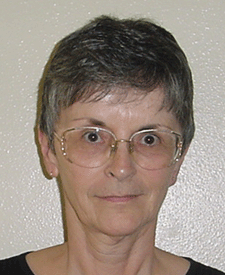
In February 2003, the U.S. Department of Defense (DoD) certified a Red Hat Linux Common Operating Environment kernel, thereby passing a key milestone in allowing the use of Linux in command, control, communications, computer, and intelligence (C4I) systems. To achieve certification, the platform had to present a specified appearance and behavior (i.e., "look and feel" as well as functionality). While this certification may be viewed as evidence of the enterprise readiness of this open source software, more work remains for GNOME to achieve a level of desktop maturity comparable to that of other industry offerings.
This presentation focuses on GNOME usability as it relates to the needs of military users. A C4I system provides a unique microcosm within which to examine and assess GNOME capabilities. By focusing on a domain where user actions can have important consequences, the open source community can better understand the impact of usability shortfalls on operator performance. The issues addressed in this presentation are drawn from the results of a comparison of GNOME, Java, Motif, and MS Windows styles that was completed in December 2003 and documented in style guidelines for C4I applications. Rather of looking at how users perform tasks using the capabilities provided by GNOME, this comparison focused instead on the usability of individual interface components. This presentation will address the following usability issues:
- GNOME lacks detailed documentation of its "look and feel" that would allow interface designers to produce a "HIG-compliant" implementation. As a result, when they examine the style provided by a GNOME implementation such as Red Hat or Sun, the absence of detailed documentation makes it difficult to determine what is a feature, a bug, or a variation in implementation. When the basic "look and feel" attributes of an interface are not defined, interface designers cannot determine if their implementation will provide a style that is consistent with other desktop applications available to users.
- GNOME does not prevent users from making errors in performing basic actions such as navigation and selection. While interface components provide consistency in behavior for documented actions, legacy behaviors that are inconsistent with this model remain available to users. As a result, the interface does not shield users from the consequences of inadvertent or random actions. For a military user, the tasks being performed and the operational environment increase the likelihood that these types of errors will occur and their consequences will be significant. The open source community needs to attend to and correct these inconsistent legacy behaviors that have a major impact on usability at the interface component level.
- The implementation of themes in GNOME can create a hybrid style that affects the usability of desktop applications created using different toolkits, each of which has its own rules for the appearance, behavior, and layout of interface components. A hybrid style occurs when an interface component has the appearance of one toolkit but the behavior and/or layout of another. While themes increase the visual uniformity of a user interface, they can create a hybrid style by removing the visual cues that indicate to users where there may be differences in behavior and/or layout. The lack of user interface predictability can increase training time, reduce the speed and accuracy of user performance, and impact the development of expertise by users.
Kathleen Fernandes is a scientist with the Space and Naval Warfare Systems Center in San Diego, CA. For the past fifteen years, she has provided human engineering support to programs developing command, control, communications, computer, and intelligence (C4I) systems in the U.S. Department of Defense (DoD). She wrote the HCI design guidelines that were adopted by DoD for use by these systems and has represented DoD in various defense, industry, and standards groups.
She is currently part of the architecture team that is defining the visualization infrastructure for the next generation of C4I systems in DoD.
Bringing the GNOME Desktop to Smalls and Medium Enterprises in Latin America, Fernando San Martin Woerner
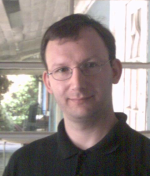
The use of Information Technologies (IT) at the moment is a key element in the operation of companies and businesses, for the sector of the Small and Medium Enterprises (SMEs) in Latin America. This sector accounts for more than 80% of the economy in these countries. For them, counting on these tools is imperative, since its absence prevents them to be competitive in a global market.
Within the market of information technologies for SMEs, a mismatch between the supply and the demand can be observed. On one hand, IT can be expensive, rigid and not adapted to the reality of the SMEs. On the other hand, and in contrast to the necessities and demands of the sector, we observe low budgets for the acquisition of IT, in addition to a diffuse vision on the benefits of the use of IT.
The promise of open source software, low cost and great quality is a chimera, while this sector of the economy does not count with software and applications able to support its productive and businesses processes. In this context diverse initiatives have arisen to provide software with different degrees of success in Latin America as well as in Spain. The present article presents the experience of a real estate company of VII the Region of the Maule in Chile, which develops open source software for its own processes and management. This software is developed for GNOME Desktop and released under GNU GPL.
System Engineer, Linux user since 1998, Main Developer of pyGestor, http://pygestor.gnome.cl, GNOME Foundation Membership since 2004, Lecturer in Universidad de Los Lagos and Universidad Catolica del Maule, teaching GNOME and other linux stuff.
Open Source Software - Policy issues - Views from IDA, Vemund Riiser

Its important that the Commissions position and work with regard to OSS are viewed in the proper context of the work and tasks of the Commission as an institution within the greater "EU project".
In practice this gives the Commission a limited role as purchaser of IT solutions and implementer of overall Policy agendas.
The presentation aims to present what the Commission in the context of the IDA programme so far has done and are planning to with regard to OSS. In addition the presentation will also take a broader view and comment on the ongoing work within the larger part of the EU Commission with regard to OSS.
Vemund Riiser is by training a Social Scientists with his formal education focused on statistics and econometrics of development and innovation policy. He holds master degrees from University of Oslo and University of Oslo/Maastricht Economic Research Institute on Innovation and Technology
His professional background consist of Norwegian Computing Centre: Research on IT and Innovation policy, Step group: Co-founder, research on innovation policy, econometrics and statistical analysis. Norwegian Gallup Institute: Quantitative projects manager Future Information Research Management: Director of methodological development. Norwegian Directorate of Public management (Statskonsult), Senior Adviser working on IT in the public sector and research methodology EU Commission: National Expert on Secondment working in the IDA programme on issues related to QA, Evaluation and policy development.
An IBM Perspective on the Desktop, Greg Kelleher

Greg hurt his back and is unable to fly. Tom Schwaller replaces him.
Greg Kelleher IBM Corporate LinuxSenior Program Manager, WW Linux Client Strategy and Market Development A member of IBM's global Linux Desktop team shares some insight into the GNOME's place in the world. Using market intelligence and his experience working for IBM, Mr. Kelleher will shed some light on the obstacles and potential we face.
During the past 15 years, Greg Kelleher has worked with customers and business partners in the technology business focused on operating systems, server software, network infrastructure, and messaging. Greg is a long time advocate of open standards and Linux. For the past five years, Greg has been working as part of the IBM Linux team bringing Linux into the enterprise with IBM's customers, Business Partners, and Linux distribution partners.
Chair discussion on competence centers, Raymond Robertsen

Raymond Robertsen, born 1974, member of the Norwegian parliament Stortinget from Høyre. Member of the Educational and Research Committee in Stortinget and member of the Business and Industrial Committee of the Nordic Council. Mr. Robertsen was Chairman of the Working Party in the Nordic Council on Open Source Software.
GNOME Roadmap, Dave Camp

The GNOME Community Road Map is a big-picture view of what functionality GNOME can expect to include through the next year and beyond. The Road Map is a combination of feedback from current GNOME developers and other community members.
David Camp is one of the most feared men in the Western Hemisphere. He is one of the two legendary Captains of Nautilus, sits directly across from a Novell Employee of the Year, and serves on the GNOME Board. People with power often pretend to listen to what he has to say, and sometimes buy him beer. He has two guitars, and his friends think he plays pretty well. Somebody made a T-shirt about him. His first contribution to GNOME was geyes, which is still distributed as part of the desktop today. Give it a try. They're watching you. Pretty creepy, huh.
Panel participant on defining Open Standards and Competence Centers., Thomas Myrup Kristensen

Thomas Myrup Kristensen works in the Danish Ministry of Science, Technology and Innovation with national and international Egovernment issues. He is the project leader for the Danish Governments Software strategy project. Thomas has a background in Political Science.
